MGs, Minis, and Millennials: The next generation of Little British Car enthusiasts
I often try to reminisce about England in the 1950s and ’60s. Crisp autumn days in the Cotswolds. Narrow village lanes. Classic British motoring. The problem here is that I was born in Canada. In the mid-1990s. The Dictionary of Obscure Sorrows defines this sort of sentiment: Anemoia (noun): Nostalgia for a time you’ve never known.
I belong to a group of young British motoring enthusiasts, and we know this feeling well.
The postwar period in England ushered in the development of small cars that perfectly paired man and machine. The liberty and optimism of this golden era were complemented by the handsome styling and reassuring handling afforded by Little British Cars (or LBCs)—chief among them, the droptop. The period marked the pinnacle of raw, tactile enjoyment that British auto manufacturing could provide, and starry-eyed enthusiasts have been chasing it ever since.

I purchased my blue 1976 MGB in 2014, when I was 19. It was my first car. Originally a Harvest Gold American-market car that had been imported to Canada, this repainted six-owner MG exemplifies the perseverance of British motoring. Locked at 38,609 miles, the odometer stopped working shortly after I bought the B. It’s a five-digit unit that I’m certain has rolled over once, if not twice. The British Leyland Baltimore Dealer business card I found under the ripped and sun-bleached seat, along with a New York State Parks ticket from 1998, alluded to the car’s history of constant use.
I’ve added another 30,000 miles, taking it from Toronto to Pittsburgh, Watkins Glen to Detroit, and Niagara Falls to northern Ontario. When I moved to Toronto from the sleepy suburbs and brought my MGB along with me, I thought I was surely the only person my age masochistic enough to strap on leather gloves and daily-drive a half-century-old oily death trap on some of the most treacherous highways in North America. As it turned out, I was wrong.
Engaging with the car scene on social media, I connected with an entire group of classic car owners who defy the stereotypes of the British car community. This group of millennials and Gen Zers spans North America, from my home in Toronto all the way to Los Angeles. And they don’t just own these old British cars—they drive the snot out of them. Why are a bunch of teens and twentysomethings suddenly so obsessed with an obscure era of obsolete British relics? I reached out to investigate, and a few of them agreed to meet to chat about it.

I arrived in my MGB and was soon joined by Jason DeFreitas in his MG Midget, Colin Doust in an Austin-Healey Sprite, and Josh Crawford with his Austin Mini. They arrived late, but only because they’d had to procure some oil for a top off. Which was fine, because it gave me time to tinker with my horn, which had stopped working. We are nothing if not immersed in the British car experience.
Unsurprisingly, one of the first topics was the reliability of our cars. Crawford, age 18, has had the most stereotypical experience. “My car has broken down dozens of times,” he said, undeterred. “But every time it breaks down, I end up learning something and am better prepared for when it breaks down next. It doesn’t stop me from going on long-distance trips.”
Jay Leno defined the classic British car zeitgeist in a single sentence when firing up Moss Motor’s experimental MGB on his web series Jay Leno’s Garage: “Oh, wow, it started!” Leno is no stranger to British automobiles, and in an episode last year, he got behind the wheel of one of his favorite cars of all time—an MGA—owned and restored by 24-year-old enthusiast Daniel Harrison. I got in touch with Daniel, who described the reliability of his 1958 MGA as nearly flawless, though he insists that maintaining these aging English contraptions isn’t always sunshine and rainbows. “Sometimes they’re extremely irritating and uncomfortable, and then occasionally you get a little golden nugget of an experience which sucks you right back in again.” Daniel’s YouTube channel “Limit 55” aims to demystify the classic car experience and portray the honest picture of owning and maintaining vintage cars.

Jason DeFreitas shared a similar sentiment on this double-edged-sword regarding his orange MG Midget. “With 65 horsepower and four gears, having your engine scream at 4500 rpm for an hour gets old. It has also taught me every possible way to get oil out of my driveway. But it is a riot to drive, handles like a go-kart, and makes all the right noises.”
It’s no secret that British cars have a famous reputation for their electrical gremlins and oil stains. The consensus among us was that these cars will always need attention— because they’re old, not because they’re British. There will always be surprises and sometimes even dark days, but their agricultural robustness and their simple serviceability have allowed them to stand the test of time. Ultimately, if you take care of these classics, they will take care of you. Having a roadside assistance plan doesn’t hurt, though.
Cars like the MGA and B, the Austin-Healey 100 and 3000, and various Triumphs defined the modern recipe of the nimble, front engine, rear-wheel-drive sports car. Despite their front-drive packaging, you could lump Minis in with them, too. That all of these cars were also affordable endeared them to millions of motorists on both sides of the Atlantic.
Minis, for example, are one of the world’s most popular classic cars. From 1959 to 2000, a mind-boggling 5.3 million were produced, six of which were used in the filming of the Mr. Bean series. MGBs also rank as one of the bestselling classics; from 1962 until 1980, MG produced over half a million of them, and it is estimated that upwards of 15 percent are still on the road today.
In addition to scoring historic victories at Le Mans, Monte Carlo, and the Nürburgring, the MGB was practical, economical, and affordable—the GT version was affectionately dubbed “the poor man’s Aston Martin.” I would put extra emphasis on the “poor” given that having roll-up windows was touted as a groundbreaking feature in sales brochures of the time. Other standard features included an ashtray and steel wheels. But novelty equipment wasn’t what sold these cars. The promise of pure joy sold them.

As demand for these Little British Cars wanes, however, so too does membership in many established classic car clubs. Although Colin, Daniel, and I are part of local and national Triumph and MG clubs, new memberships are still failing to offset the loss of old ones. Reassuringly, however, these cars are re-emerging in new circles. When he isn’t studying engineering, Josh can be found attending a number of local car meets and club events, including one at his university. Jason, meanwhile, runs a popular local car club called Northrides Orangeville. His aim is to create an inclusive group “free from idiots and judgmental a-holes” where his MG Midget can be seen alongside JDM classics and Kei trucks, German autobahn cruisers, and various exotics.
Today, the price of car ownership is skyrocketing. Many new vehicles feel out of reach for young people, and many of the previously sensible classics like Mazda Miatas and Datsun 240s are becoming all but unattainable. But not these Little British Cars. The value trend lines for MGAs and Bs, Midgets, Minis, and Spitfires have generally remained flat over the last decade. That’s great news for the money-strapped youth of the world.
Even better, these cars can be serviced and even rebuilt with the most rudimentary of hand tools. A half-inch wrench and a screwdriver can fix most things, and every single part for these cars is readily available—and largely affordable, though most parts seldom need replacing at all. In fact, the overall simplicity of these LBCs—MGB shock absorbers are based on 100-year-old compact hydraulic lever arms that can be serviced rather than replaced—helps keep more of them on the road. Putting miles on these cars comes easy when maintenance costs are low and fuel consumption is that of a lawnmower.
Even with fuel prices currently at obscene levels, I’m still not dissuaded from driving. My B averages 30 mpg on the highway, and I regularly exceed 6000 miles per year in it. Josh drives his Mini more than 2,400 miles a year; Jason takes his Midget on frequent long journeys; Daniel’s MGA has been across California and back; and Colin is planning a thousand-mile trip to Road America with his Sprite.
And even with their wallet-friendly powertrains, these cars are far from slow and boring, which only furthers their timeless appeal. Although the MGB’s 95 horsepower doesn’t sound like a lot, a properly tuned B-series motor is a highly capable musical instrument with a uniquely throaty howl. Mild upgrades to any of these cars—lightened flywheels, headers, shaved and ported cylinder heads—go a long way toward maximizing performance. Ancient, dependable, and famously fickle twin SU carburetors allow for some of the best throttle response available.
Sure, modern cars offer infinitely more comfort, safety, and even speed than their vintage British counterparts, which never got the memo on noise, vibration, and harshness. But the overwhelming majority of new vehicles today are a beige appeal to the lowest common denominator, each crammed with a tacky assortment of gimmicks which are simultaneously everything and nothing. Amid the landscape of increasingly boring modern cars and increasingly expensive classics, Little British Cars are a gleaming beacon of hope for a truly attainable driving experience. For younger enthusiasts, they present a unique opportunity to get the thrill of a sports car, the charm of a classic, and the price tag of a clapped-out Hyundai. And, as always, you won’t lack for attention: My 47-year-old MG gets looks everywhere I drive. Smiles and happy memories shared from silver-haired gentlemen recalling their youth. Waves from little kids on their bikes telling me to floor it (I usually already am).

“Still One Jump Ahead” read British Leyland’s MG advertisements throughout the 1970s. By the end of the decade, most new British cars were absolutely showing their age; they were outdated and outpaced by the competition, which increasingly came from Japan. Nevertheless, what made these British cars so popular in the past is what will allow them to prosper in the future. Affordability, simplicity, and fun have always been a recipe for success. Among the noise (and, increasingly, the EV hush) of today’s automotive landscape, cheerful LBCs will continue to attract the latest generation of enthusiasts eager to experience the analog freedom of the golden age of motoring. The Little British Car, it would seem, is still one jump ahead.
* * *
“What would you tell other people looking to get into a classic British car?”
***
Check out the Hagerty Media homepage so you don’t miss a single story, or better yet, bookmark it. To get our best stories delivered right to your inbox, subscribe to our newsletters.

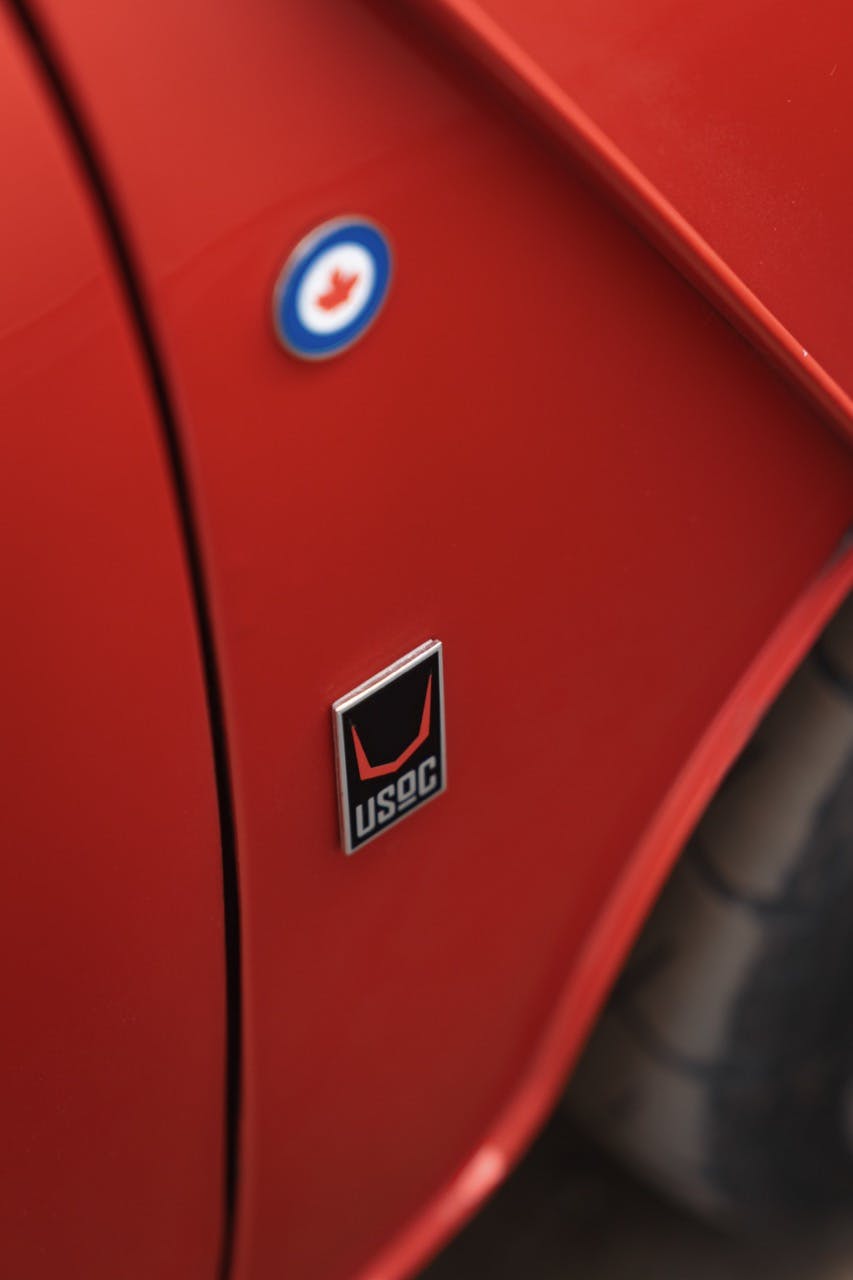
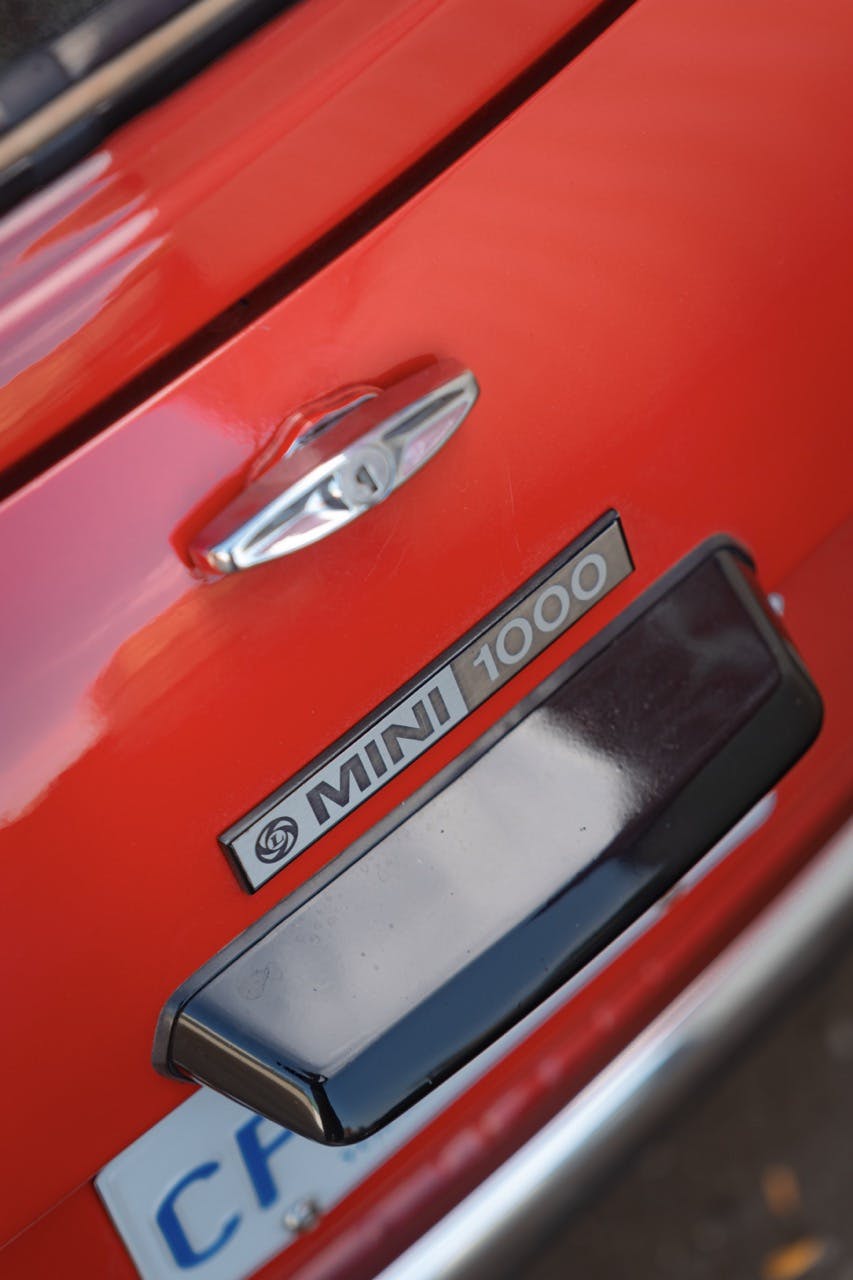
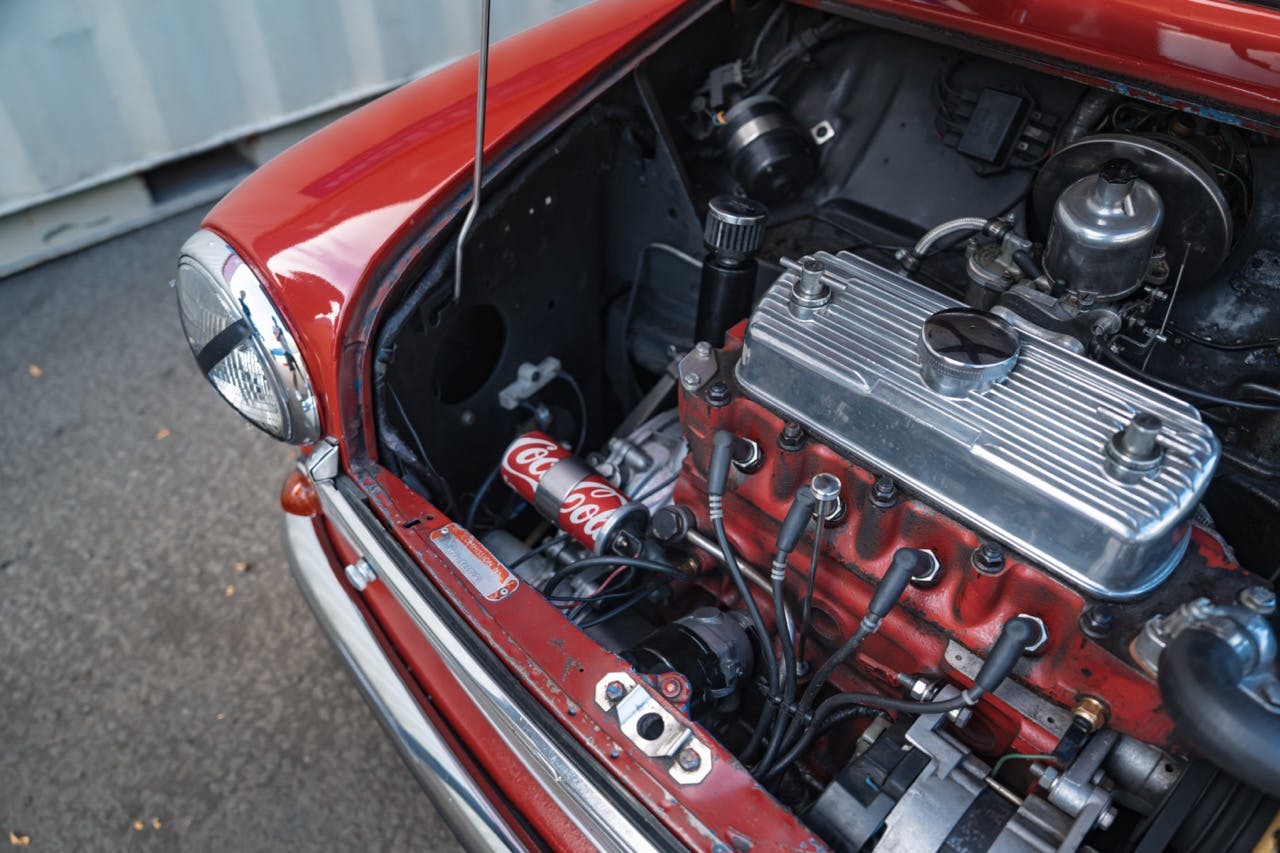
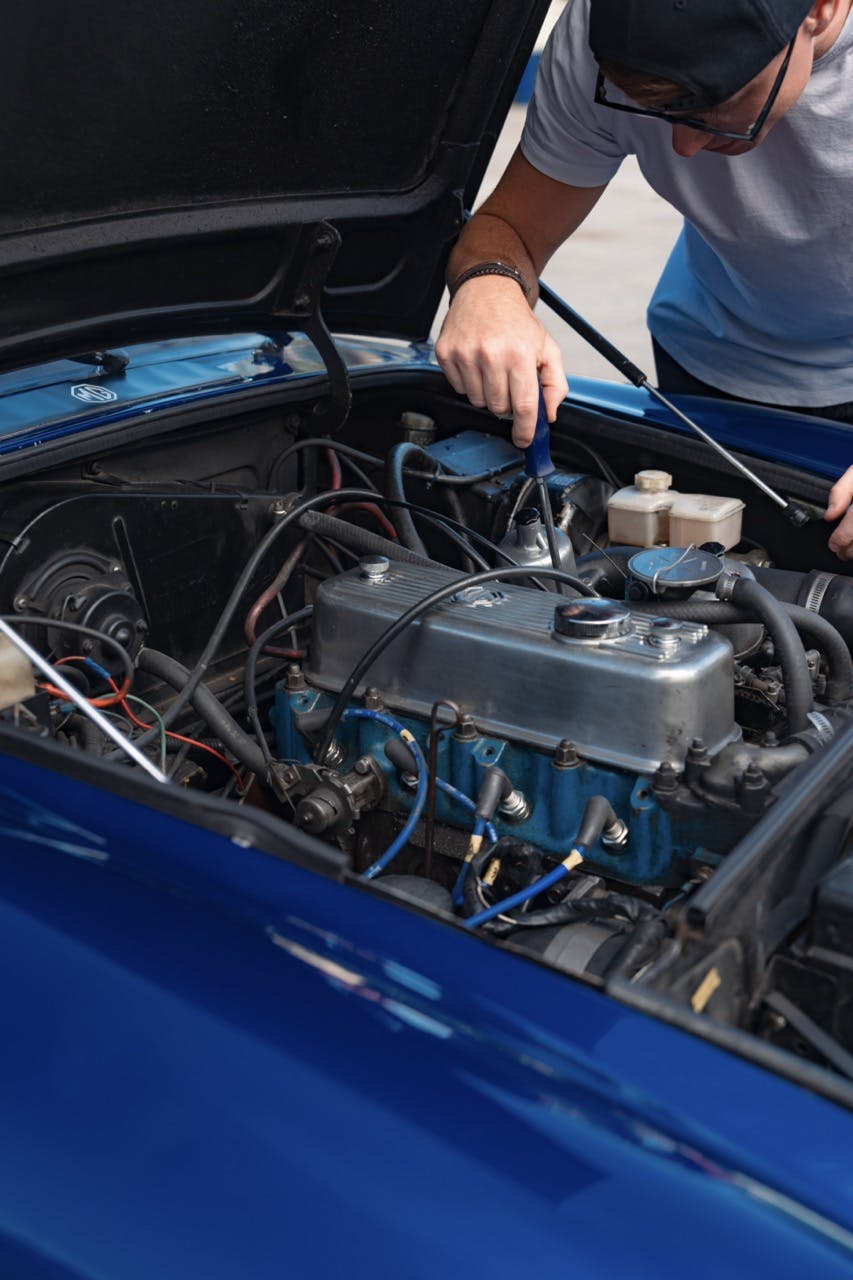

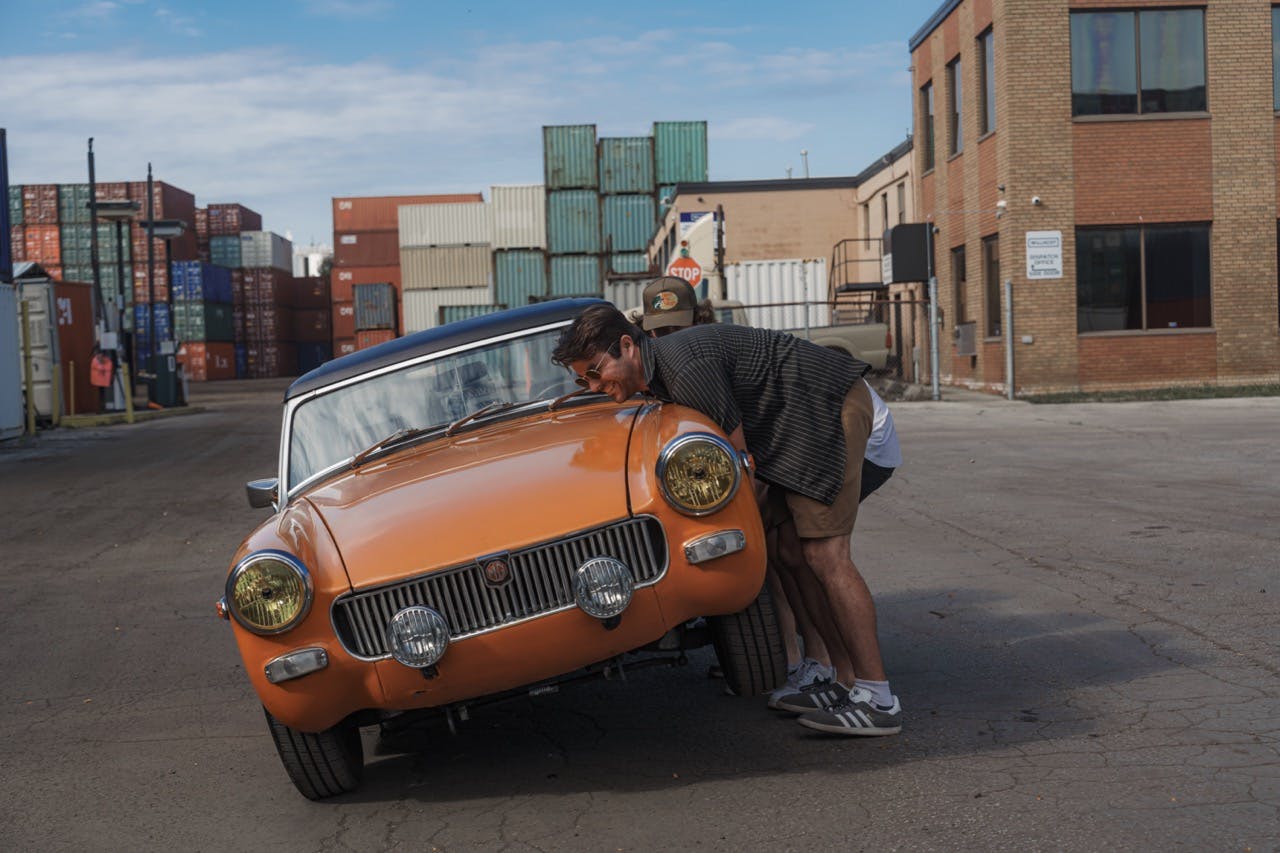


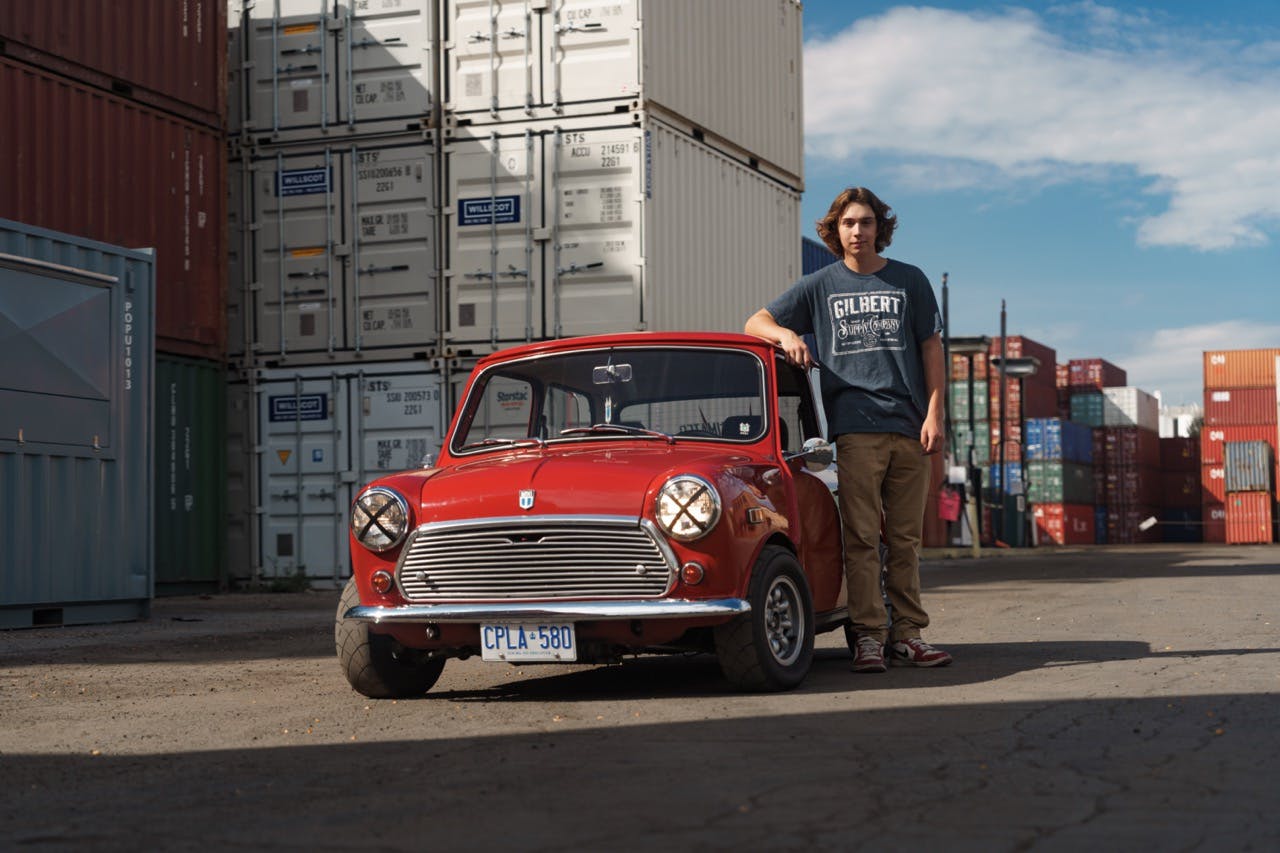
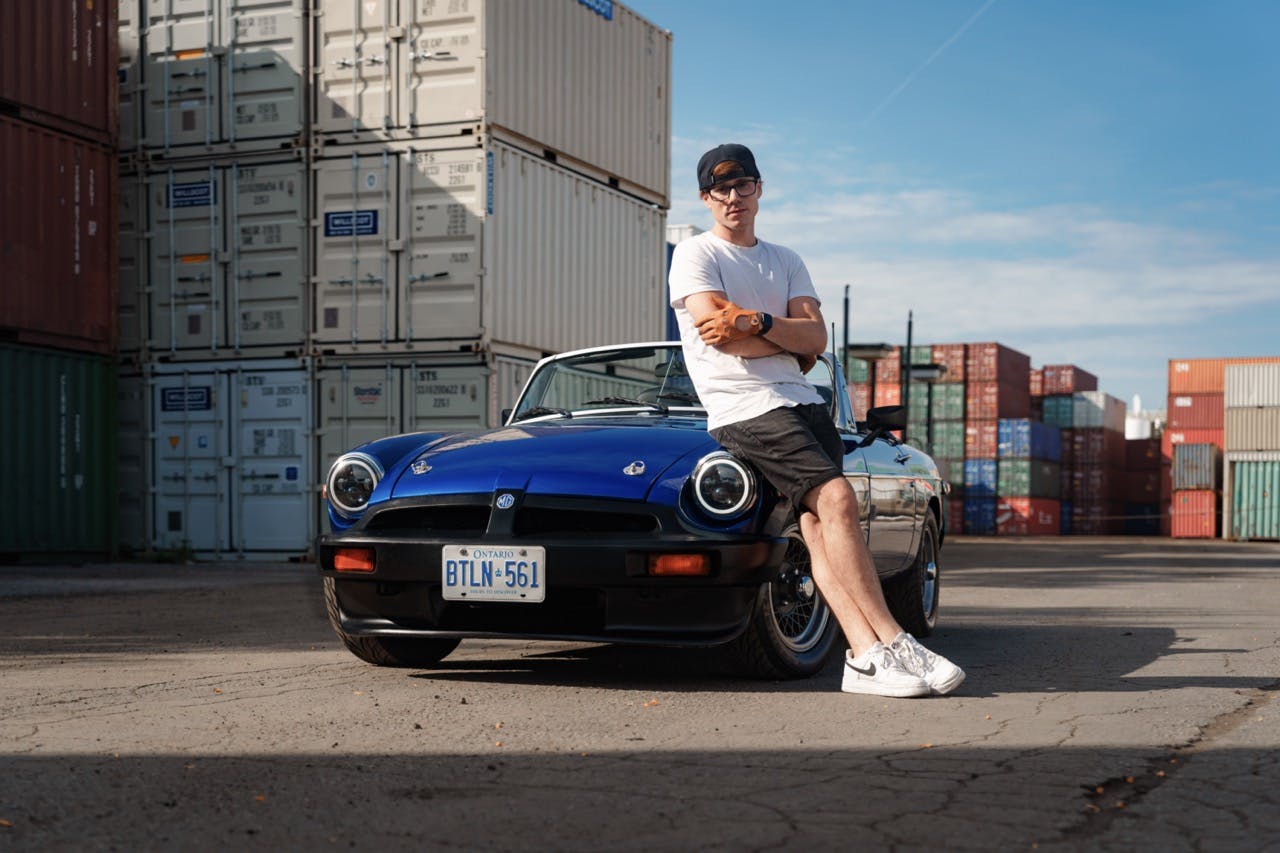
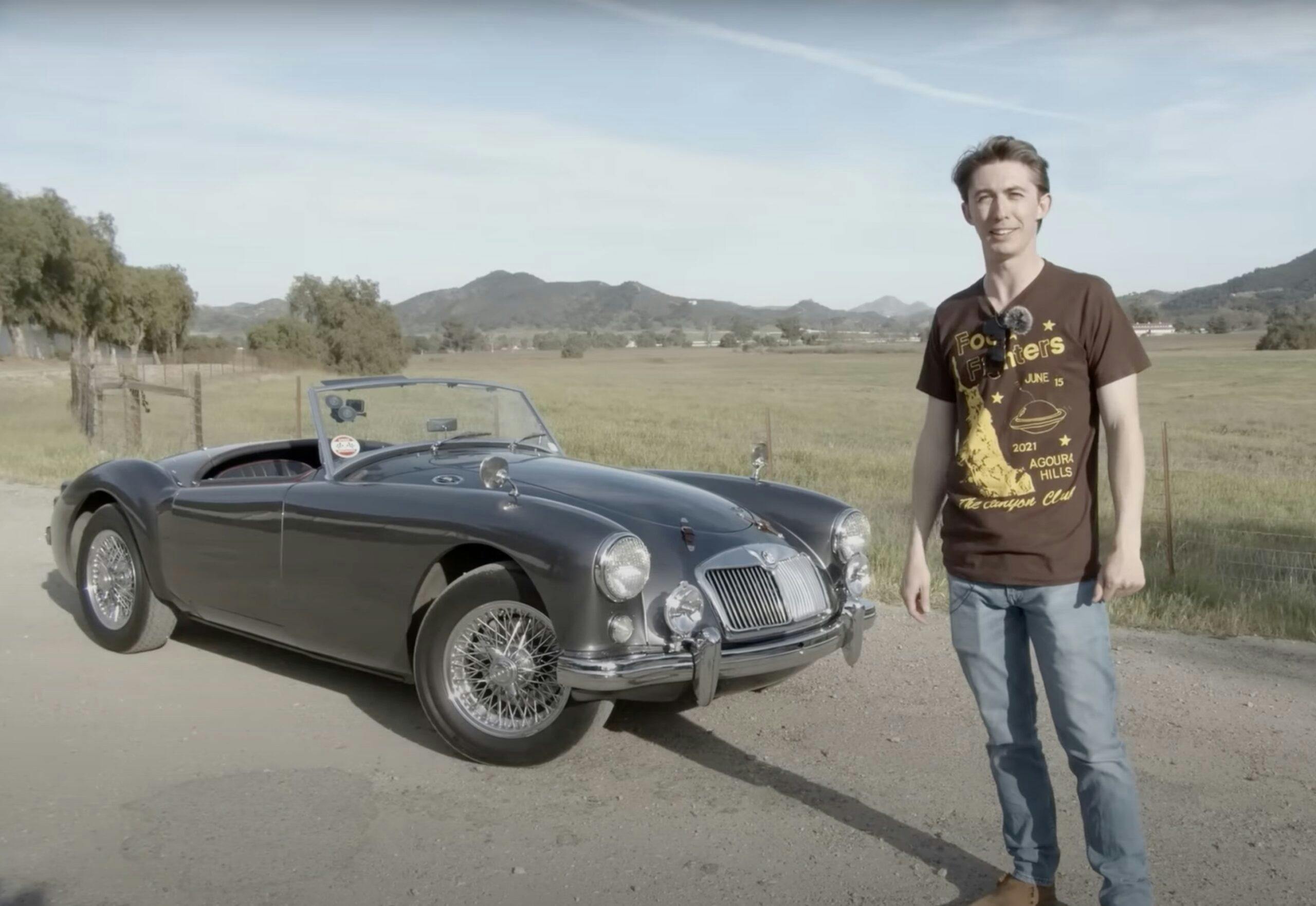


I’ve had my 76 MGB for over 40 years.
Restored and painted original color , Flamenco Red. I have over 100,000 miles on the original motor. I’ve been cross country with it and belong to a British Car Club out here. It is still to this day, my favorite car to drive. I switched the SU’s to a Weber DCOE , Dual sidedraft carb. Mileage is a bit down, be performance is way up.
The “oil” issue was solved by removing the “environmental ” stuff which was over pressuring the crankcase. ( this stuff is not required in Wyoming), and it doesn’t leak hardly a drop of oil. It doesn’t get the attention it is due, but I run into a lot of people who say :” I used to have one of those,” or ” my dad/ grandfather used to have one of those. “
Nice article. I have been a British car nut since I was about 12, now 75. I grew up in Montreal where there were a lot of British cars. I moved to Newfoundland in 1970 with my Austin America. At the moment I own a 1960 Jag MK2 and a 1974 XJ6 as well as a 1969 GT6+. Newfoundland is a lonely old place for British car owners but luckily I belong to two British car clubs in Nova Scotia.
I wonder if we both belonged to the St Johns Motor Club at that time? I worked at CJON from 71-73 and VOCM from 78-88. Bob Giannou was the mover and shaker and Bill Goodyear probably fixed you car, unless you took it to Cook and Jones??? the Leyland dealers on Topsail Rd.
I have owned three Minis, a 66 1275S, 62, and 65 Minis. The 65 Mini was a rust bucket with matching front fender holes filled with bondo. I poured thousands into that car, even built my own wiring harness with about 10 fuses instead of the original two.
I drove it to the Portland, Oregon British Car Meet in 1988(Saluting the Mini).
In 1989, my Mini and me made it to Denver from Southern California and back.
I bought that Mini for $500 because it wasn’t running- a broken crankshaft.
I made the serious mistake of selling it for $2500.
Now, I haven’t seen any on the market for less than 20K.
I can’t afford one anymore.
So, if you have a LBC, don’t make the mistake of letting her go.
I didn’t own an America Car till around thirty… First was a 69 Spitfire that was passed down through me and then both sisters as their first car (shoulda been gold plated). Then I went to a Triumph GT-6+ and drove it everywhere, followed with a 77 MGB which I did sell a few years later as I had a company car and money was tight. Had a truck, then Jeep and with the invent of the C4 Corvette had to have. Ended up with a BMW Z4 Coupe in 2010 because it reminded me of the GT-6. But she is a class act in her own right, followed by a couple sportscars. In reflection, all I have personally owned are two-seaters and the Jeep had the rear seat out. Does that make me a selfish little %^!* or something else..👿.
Hi all,
I have a 1976 MG Midget 1500 Midget that I bought brand new in 1976. It’s a non-catalyst Fed. Spec model with the higher compression 1500 Triumph engine they switched to in 1975. Given purchase of a new home in ’93, two boys in high school with college in-sight and a third boy on the way, I mothballed the car properly in our detached, unheated 2-car garage since it had developed distributor issues. Now retired, I spent the COVID years, late ’19 to ’22, slowly re-fitting the car for road use again. Virtually all the original parts are available and remarkably cheap: $ 49.95 brake master cylinder, $99 clutch slave and master cylinder and hoses, $100 dual rear wheel drum brake system parts, including drums and shoes, etc.
They key to storing a car for refit is in the preparation and maintenance. I have a written procedure for that I learned decades ago from a collector. Contact me if you would like a copy. I’ll email it.
Richard
Mr. Richard.
Sir, I certainly would appreciate your maintenance/storage report. I have a 1977 yellow (not sure what color yellow), MG MGB. I previously had a 1977 green (sold due to family increasing) and i loved it. My new 1977 has been stored for awhile, dont kniw the status on this one (as far as starting and using), but it is the only car i iwn so id like to be able to drive) I would like any info however that might be relevant to get me going. Thanks your insight might be great and greatly appreciated. Thanks so much. My email is above. Great to talk to you and a good day to you.
Debra Cordes
One of the best things I ever did was to put a Ford 289, 4speed, disc brakes, steel wheels off a Buick and 56 Mercury, Polyglass GT tires, a completely new custom wiring harness, and modern shocks on a 59 2-Seater Healey. Drove it for 12 years, learned how to control 4wheel drifts, and had Zero problems. I spent $500 for the car, which had a brand new top, sold off drivetrain and ended up with only $200 invested in the base car. If you could still buy one cheap, I think it’s the most fun you could have in a British car.
In my youth I lived in the UK and drove BMC and Leyland products. Others have said it. . . Lucas connectors are the cause of many electrical faults. Sometimes the fault can be cured by a wiggle of the offending connection, other times the connector must be replaced. Half the battle is knowing which connection to wiggle. SU fuel pumps with those horrible points! Still, you can disassemble them, clean them, and most times get them working again. . . Digital versions are so-o much easier to live with! Switches from other cars will not spruce up the look of your dashboard but have you ever tried to source a Lucas switch for changing from one fuel tank to the other!!! Almost impossible to find. Ah! British cars, you gotta love them!
My ’67 B was my first car, purchased in 1978. In that first year or so of ownership the most common comment it elicited was “I had one of those, I wish I never sold it.” I took it to heart.
My very first car was a 1963 MG Sports Sedan. I bought the car in February, 1972 and it was already pretty clapped out. Even with my week automotive skills at the time I was able to keep it running long enough to learn how to drive a stick shift. I see a lot of pictures of Migets, A’s, and B’s. but i never have seen a picture of the Sports Sedan much less the car itself. I always felt that this car was the predecessor of the Mini with it’s transverse mounted engine. So how about including the SS in a story about MG’s someday?
Loved seeing this. YES-please, younger people, if you have any car interest at all, these cars are worth their weight in gold, and you don’t have to have all that gold to get one or keep it running. I started out with a 1957 MGA at 19, our full-time runner for a number of years. Over the decades I’ve had three more 1959 TR3s and now own a near pristine 1970 GT-6+. The last two TR-3s are in good hands with my son in the process of rebuilding one, and the other in the capable hands of a good friend who is rebuilding the engine to make the car his ‘runner’ after the frame up restoration of another TR3 and a TR6. Warning: they’re addicting. The pure joy of driving them you can only understand when you’ve done it. Please though, don’t restomod them unless they are truly a clapped-out mess. Get one of those if that’s what you want to do. The originals (even those improved with LEDs, electronic ignition etc. that really do make sense) are fewer all the time, but SO fun in original form! The availability of almost all parts and the truly wonderful online groups that are incredibly helpful with years of experience working on these cars (and yes, you will need to learn to do that, but it’s actually doable and-usually- fun) makes the experiences unlike any others you will have. It’s a wonderful group of people. The last year or two some of us have begun to infiltrate some of the car shows where we are truly unique in a sea of muscle beasts and a few elder statesmen. And yes, an amazing number of people come up and say they or a friend had one of these Brit cars back in the day, and they almost ALWAYS say they wish they still had it too!
And if you’re truly, truly lucky, you may find an actual mechanic who knows these cars (mine is actually now a Harley mechanic) and has an experienced and willing hand-and a lift! ;D
Back in the mid 60s I drove a Austin Healey 100 with a HiPo 289 V8, T10 gear box. Very fast, but not refined.
Then for over 40 years , a Morgan plus 4. Quick but not fast. For the past 12 years, a 2003 Morgan plus 8 the way the factory made them. Quite fast, more comfortable, 3 inches more cockpit length. For that 79 year “old” guy, at 79 I am going to keep going
I owned my 79 MG-B for 21 years. I am pleased to see the young generation rolling up thier sleeves, turning wrenches, and enjoying these cars. Parts are easy and reasonally priced. . Sadly, I sold it due to jacked – up Pick Up trucks that ran me off the road a few times too many.
Only the Brits could design a two passenger car that requires four people to operate the top.
Hear, hear! My only complaint is that you never mentioned the multitude of entries from the Triumph stable – TR2-7, Vitesse, Herald, Spitfire/GT6. I am hopelessly in love/hate with Archie, my 1972 (71 & 9/10ths) which is a weird blend of the two years. Triumph never threw out a part due to model year change. They just kept using bits until they were gone. The wiring diagram is particularly interesting…
Excellent points around Triumphs. Tons of opportunities around Spitfires and TRs.
What really got me started in LBCs was a cold winter evening chauffeuring a drunk around Ann Arbor in his ’64 Sprite. There was no gearshift knob, just a metal t-handle that was several sizes too large for the shift lever. You don’t buy these cars for basic transportation, you buy them for the adventure. The stories are just a bonus.
Anybody who has ever owned one of these cars wants another.
(Very well-written article and very insightful. It’s nice to see these cars in the hands of people who understand.)
I learned to love LBC’s in 1972 at The Catholic University of America in Washington DC.
Being on scholarship there and daily short of money I would look longingly at my fellow students who drove “Daddy’s old car or their HS graduation present.
All of these WONDERFUL school mates were far wealthier than I, but extraordinarily generous.
Multiple offers and of would you like to drive it? Even one of, “I know you have a big date tonight, take the MG and have a good time. Just remember it takes premium gas.”
2 1/2 years ago I lucked into a 1979 (from the serial number actually one of the last 80’s) with under 50K original miles for $10K. I bought it on the spot no questions asked.
I love it and so does my fiancé.
I will drive it until I die.
Harry, are you the Tuns Tavern Football Harry? I remember you driving a Subaru Brat. Tony.
I’ve wanted a B since I was a CYO camp counselor in 1974. Miss Alice, a fellow counselor was blonde, long and peggy amd everyone loved her. I loved her car, a ‘72 MGB, Midnight Blue with a white canvas top.
40 years later, I got my B; 1971 Signal Red with a weber carb, Pertromix ignition and chrome wire wheels.
It makes everyone around me happy and when I downshift third to second, it makes that lovely British thrum. It never fails to make me smile.
If this is Harry from Staten Island, give me a shout at nobends@aol.com